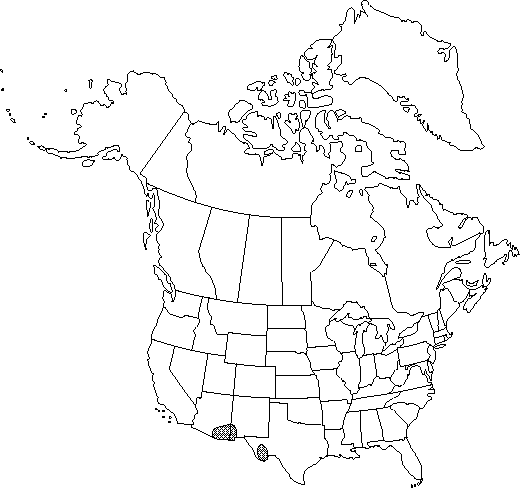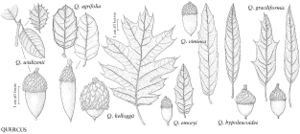Quercus hypoleucoides
Bull. Mus. Natl. Hist. Nat., sér. 2, 4: 124. 1932.
Trees or shrubs, evergreen, to 10 m. Bark black, deeply furrowed. Twigs dark reddish-brown, 1.5-3 mm diam., pubescent. Terminal buds light chestnut-brown, ovoid, 2.5-4.5 mm, glabrous except for ciliate scale margins, occasionally with tuft of hairs at apex. Leaves: petiole 1.5-13 mm, densely pubescent. Leaf-blade narrowly ovate to ovate or elliptic, 45-120 × 15-40 mm, base cuneate to rounded, margins strongly revolute, entire or spinose with up to 11 awns, apex acute to attenuate; surfaces abaxially densely tawny or white-tomentose, adaxially noticeably rugose, glabrous. Acorns annual or biennial; cup deeply saucer or cupshaped, 4.5-7 mm high × 6-13 mm wide, covering 1/3 nut or less, outer surface pubescent to sparsely puberulent, inner surface pubescent to floccose, scales appressed, blunt; nut ellipsoid to oblong, 8-16 × 5-10 mm, glabrous, scar diam. 2.5-5.5 mm.
Phenology: Flowering spring.
Habitat: Common in moist canyons and on ridges
Elevation: 1500-2700 m
Distribution

Ariz., N.Mex., Tex., n Mexico
Discussion
Quercus hypoleucoides reportedly hybridizes with Q. gravesii (Q. ×inconstans E. J. Palmer [= Q. livermorensis C. H. Muller]) (see C. H. Muller 1951). Several specimens from Pima County, Arizona, fall outside the range of typical Q. hypoleucoides, suggesting hybridization with the Mexican Q. mcvaughii Spellenberg (R. Spellenberg 1992).
Selected References
None.
